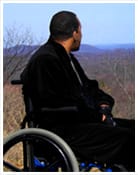An American Tragedy: The Epidemic Of Nursing Home Abuse
The epidemic of nursing home abuse results in injury to countless vulnerable and elderly residents each year.
Nursing home residents are among our country’s most vulnerable. They are elderly, infirm, suffering from various medical ailments and in need of hands-on attention around the clock. Sadly, as many as 10 percent of residents in assisted living facilities and nursing homes are victims of abuse or neglect.
Abuse can come in many forms, and at the hands of a number of perpetrators. In a residential care setting, neglect or abuse by facility staff members is the most common. That being said, fellow residents, visitors, outside workers (such as contractors hired to perform maintenance or provide equipment) or even family members can also be abusive.
In recent years, the potential abuses have expanded beyond the “traditional” physical, sexual, and mental/emotional categories to include identity theft and privacy violations. The privacy violations often take the form of inappropriate social media postings like graphic photos and videos posted or shared without a resident’s knowledge or permission. High-profile cases of this type of abuse even led Senator Chuck Schumer (D-NY) to introduce potential federal legislation to punish offenders.
Be On The Lookout For Subtle Signs Of Abuse
Physical abuse could be obvious in some cases, particularly if a loved one in a nursing home has visible injuries like broken bones, black eyes, and unexplained bruising or lacerations. Keep in mind, however, that some abusers are careful to not inflict harm in areas that would be visible in regular interactions (areas covered by clothing, medical equipment or orthotics/prosthetics, etc.).
In other instances, though, the signs are much more subtle. Be on the lookout for these possible indicators of abuse or neglect:
- Sudden “clinginess” on the part of the resident / a reluctance to be left alone in the facility
- Reports that other residents have been victimized (as the saying goes, “where there’s smoke, there’s fire”; an abuser could have multiple targets in a single facility)
- Abrupt onset depression or anxiety, which is often a manifestation of post-traumatic stress or shame stemming from abuse
- Unwillingness to be alone with, or shying away from, certain fellow residents or staff, which could indicate abuse behind the scenes
Obvious Signs Of Neglect Or Abuse
Abuse is easier to spot if you know what to look for. Sometimes there are outward physical signs that a resident is being abused or neglected, including:
- Fractures
- Sudden and dramatic weight loss (an indicator of malnutrition)
- Bruises, lacerations or cuts
- A noticeable difference in personal grooming habits in a short period of time (a gradual decline might be explained away by worsening health, but a sudden change in appearance from, for example, a usually fastidious and meticulous person, could signal neglect from staffers)
- Bedsores (“decubitus ulcers” or “pressure sores”) which indicate a resident is remaining immobile for long periods
- Being allowed to wander away from the facility and suffer exposure to the elements as a result
Have you noticed these or other signs of abuse in a loved one at a nursing home or residential care facility? If so, you should immediately file a complaint with the facility’s management. An internal investigation may uncover abusers and subject them to administrative action, thus putting a stop to the abuse.
Once the immediate harm has been addressed, however, there could still be lasting effects, including worsening health, the need for advanced treatment, psychological damage and more. Consult an experienced nursing home abuse attorney to learn more about potential legal causes of action.

